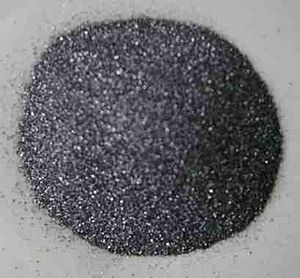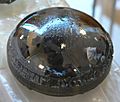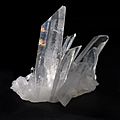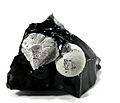Silicon facts for kids

Silicon is a special chemical element with the symbol Si. You can find it as element number 14 on the periodic table.
Even though silicon looks a bit like a metal, it doesn't act exactly like one. For example, it doesn't conduct electricity as easily as metals do. This makes it a metalloid, which is a type of element that has properties of both metals and nonmetals. Silicon is super important today, especially in computers and almost all electronic devices. Another element, Germanium, can also be used in computers, but silicon is much easier to find.
There's a lot of silicon all around us on Earth. If you go to the beach, you'll find silicon in the sand. Sand is actually a compound of silicon called silicon dioxide, also known as silica. Did you know that glass is made by heating sand until it's super hot? You can even make glass different colours by adding other compounds. Silicon is also a big part of many rocks and minerals, which are called silicates.
How Silicon Helps Computers Work
Silicon is known as a semiconductor, which means it can control the flow of electricity. This special ability makes it very useful in computers. Scientists are even working with a super-pure type of silicon called silicon-28. This new, purer silicon is 40 times cleaner than before!
This extra-pure silicon is key for the next big step in computer technology. It helps store tiny bits of information called "qubits." These qubits are held inside atoms of other elements, like phosphorus, which are placed in a very thin layer of the ultra-pure silicon-28. Qubits are amazing because they can hold both a "one" and a "zero" at the same time. This allows for incredibly fast and complex calculations in computers.
Related Elements
Images for kids
-
Jöns Jacob Berzelius discovered the silicon element in 1823.
-
The MOSFET, also known as the MOS transistor, is a key part of the Silicon Age. It was invented by Mohamed M. Atalla and Dawon Kahng at Bell Labs in 1959.
See also
 In Spanish: Silicio para niños
In Spanish: Silicio para niños














